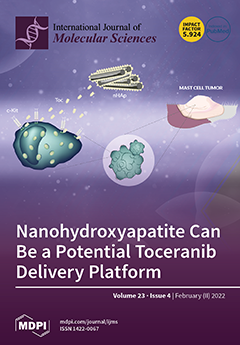Neospora caninum is an apicomplexan parasite closely related to
Toxoplasma gondii, and causes abortions, stillbirths and/or fetal malformations in livestock. Target-based drug development has led to the synthesis of calcium-dependent protein kinase 1 inhibitors, collectively named bumped kinase inhibitors (BKIs). Previous studies
[...] Read more.
Neospora caninum is an apicomplexan parasite closely related to
Toxoplasma gondii, and causes abortions, stillbirths and/or fetal malformations in livestock. Target-based drug development has led to the synthesis of calcium-dependent protein kinase 1 inhibitors, collectively named bumped kinase inhibitors (BKIs). Previous studies have shown that several BKIs have excellent efficacy against neosporosis in vitro and in vivo. However, several members of this class of compounds impair fertility in pregnant mouse models and cause embryonic malformation in a zebrafish (
Danio rerio) model. Similar to the first-generation antiprotozoal drug quinine, some BKIs have a quinoline core structure. To identify common targets in both organisms, we performed differential affinity chromatography with cell-free extracts from
N. caninum tachyzoites and
D. rerio embryos using the 5-aminopyrazole-4-carboxamide (AC) compound BKI-1748 and quinine columns coupled to epoxy-activated sepharose followed by mass spectrometry. BKI-binding proteins of interest were identified in eluates from columns coupled to BKI-1748, or in eluates from BKI-1748 as well as quinine columns. In
N. caninum, 12 proteins were bound specifically to BKI-1748 alone, and 105 proteins, including NcCDPK1, were bound to both BKI-1748 and quinine. For
D. rerio, the corresponding numbers were 13 and 98 binding proteins, respectively. In both organisms, a majority of BKI-1748 binding proteins was involved in RNA binding and modification, in particular, splicing. Moreover, both datasets contained proteins involved in DNA binding or modification and key steps of intermediate metabolism. These results suggest that BKI-1748 interacts with not only specific targets in apicomplexans, such as CDPK1, but also with targets in other eukaryotes, which are involved in common, essential pathways.
Full article






